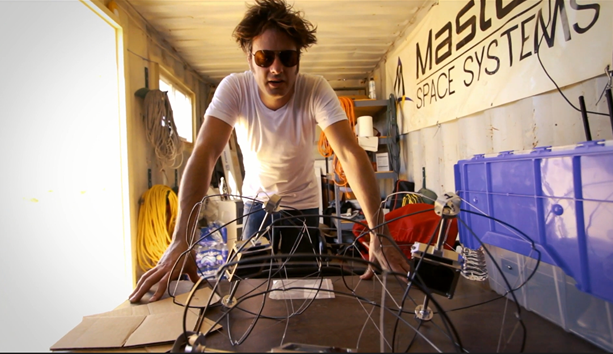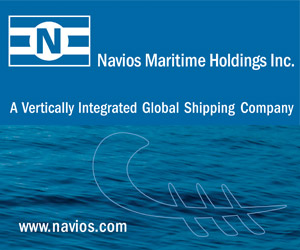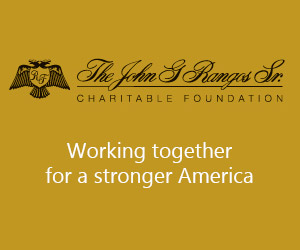Art & Science Converge for an Out of this World Odyssey
Musician Jason Achilles Mezilis channels his passion for astronomy into a partnership with NASA

by Maria Karamitsos*
Musician Jason Achilles Mezilis is a study in contrasts, an artist of many layers and dimensions. Peel away those layers and discover a trained classical pianist, a rock guitarist, an orchestral composer, and producer. Find a member of the choir at St. Sophia Greek Orthodox Cathedral in Los Angeles. Continue, to reveal at his core, a science enthusiast who’s channeled his creativity into partnerships with NASA. This proud Greek-American weaves all his interests into his work, which now catapult him onto an out of this world odyssey.
Mezilis is the son of a Greek immigrant father from Elassona, Thessaly; and an American mother. Born in Evanston, Illinois, his family relocated briefly to Michigan, then settled in Cupertino, California, where his father worked in Silicon Valley during the early years of computer development. “We didn’t speak Greek at home. I did go to Greek school, but I didn’t have any Greek friends. Though my family always called me Axilleas, I didn’t begin to realize the influence of my Greek heritage and truly embrace it until I was in my 20s. Adding Achilles to my stage name really brought my heritage to the forefront. It’s hard to ignore a guy named Achilles, and it’s easier for folks to remember,” he says.
Like planets in the solar system, his many interests revolve around a smoldering sun of creativity. It began in his youth.
Feeling intimidated by his father’s expertise as a classical guitarist, from the age of eight, Mezilis instead became enamored with and studied classical piano. He began listening to rock music soon after and began teaching himself all the guitar parts on the piano. “But then hearing Eddie Van Halen changed everything. I fell in love with the guitar.” He also plays baglama. He’s combined all of these influences into his compositions.
During a career spanning more than two decades, and now touring internationally as an experimental rock multi-instrumentalist, he’s played with many diverse musicians. Mezilis also composes for other artists, and has written music for film, TV, and video games.

Screenshot from a video in which Jason Achilles Mezilis demonstrates testing on the Lunar ExoCam Static Camera, his latest project with NASA.
Another planet in his galaxy is the Greek Orthodox church. He’s sung in church choirs since his teens. This grounding experience, he said, not only feeds his creativity, but also his soul.
His musical diversity is indeed a study in contrasts, however, there’s yet another layer to Mezilis, like another planet, that’s led him on an exciting new orbit.
“I’ve always been interested in astronomy, astrophysics, and cosmology. When I attended UC Berkeley, a team there was actively discovering the first extra solar planets. It fueled my curiosity. I did take astronomy courses but they were quite remedial; I got bored and instead concentrated on my music degree.”
Years ago, in an interview, he expressed that if he weren’t a musician, he’d be “doing something in the science world. “When I was in Kindergarten, I saw a model of the solar system. It blew my mind. I also recall the first time I saw Jupiter through a telescope. I could see the clouds on the surface. Later, I saw a solar eclipse and became enamored with science fiction. I’ve always loved anything to do with space, but until a few years ago, I never did anything professionally.”

Jason Achilles Mezilis, PHOTO: EVAN RODANICHE
He said as time progressed, he felt something missing. “My artistic side was chugging along, but a whole other aspect of me was unfulfilled. It seemed impossible to do something in the space industry without a degree. I studied a lot. I started having these crazy ideas and randomly emailed scientists. Then one day, the microphone idea came along.”
His research revealed that for 20 years, people attempted to develop a microphone that could record sound in space but hadn’t succeeded. As a musician and producer, he knew about microphones.
“The idea bolted through me like an electric shock. I’d stumbled upon this rare crossroads between space and audio. I could leverage my professional life with my interest in the space world.”
Following six months of research, in fall 2016, he contacted NASA. “I was on tour with my band on the East Coast when I received NASA’s response. They were interested and wanted to meet via phone. After a late night performance, while my band was still passed out on our buddy’s living room floor, I got up early that next morning for a call, quickly slamming a coffee to stir my brains. It was one of the most surreal experiences.”
Impressed, NASA moved forward on the project with Mezilis as a consultant. He teamed up with Caesar Garcia, a microphone designer and engineer. “We clicked right away. He was equally excited for the project. When he told me he competed as a 10m diver for the U.S. in the 2004 Athens Olympics, and started talking about his adventures in Greece, I knew we had a good vibe.”
Several months later, they presented their design plan at the NASA Jet Propulsion Laboratory (JPL) in Pasadena. “What an honor to be selected and work with their team. Unfortunately, they didn’t have the budget to develop our custom design, but later with our input, selected an off-the-shelf component. We chose an existing microphone we felt could survive the trip, the conditions, and do the job.”
Mezilis gives public talks about the microphone’s development and how he came to work with NASA. His scientific presentations include IPM2018 Workshop on Instrumentation for Planetary Research in Berlin, and a lecture on transformative lunar science at Microsymposium 60 in Houston, Texas. “When I present a public lecture to folks about this Mars microphone development, we include music performances before or after, and tie the music into it. It’s a really fun marriage of my interests.”

Jason Achilles Mezilis in the studio, recording the aptly titled, ‘Ready to Launch’.
The Mars Perseverance Rover mission, outfitted with the microphone, launched this past summer. He attended. “Witnessing a rocket launch is awesome. It’s overwhelming, especially that I helped put something on it. I confess, I got emotional.”
The trip to Mars takes six months. The microphone he contributed to is set to record the landing sequence in mid-Feb 2021. “Likely it will take a few weeks to get the audio back. It’s unclear when we’ll be able to hear it. Transmission and bandwidth are at a premium, so it will take some time.”
Fueled by the experience, Mezilis wanted to work with NASA again, but this time, as a project leader. Ideas swirled in his head. One day serendipity intervened when, performing as a musical guest at an astronomy lecture in Pasadena in late 2018, Mezilis met Rex Ridenoure, a 40-year veteran of the space industry.
He shared his idea for a novel camera design he called “ExoCam” (from the Greek word for “outside”) that would remotely capture video of rockets landing on other worlds. People would see something never before witnessed. “I had originally wanted to outfit a camera on the 2020 Perseverance Rover to Mars. It was a little late for that mission, but we found another application. Rex has been involved in developing cameras for space since the Space Shuttle days. He was intrigued; one of the few who said this was not impossible. We started working on it together.””
An initiative by President Trump paved the way. “The President refocused NASA funding for moon projects, in hoping to achieve a human landing on the Moon by 2024. I reformulated the camera proposal for lunar development.”
In early 2019, with Rex’s assistance, Mezilis secured a five-minute presentation spot at a lunar and planetary science conference outside Houston. There, he introduced the idea to the space community. Quickly momentum began to grow.
To date, they’ve received $650,000 in NASA support and joined forces with spacecraft technology developer Honeybee Robotics for systems engineering. Rex’s company, Ecliptic Enterprises Corp., will provide avionics, and Arizona State University is supporting the data and image analysis. Masten Space Systems is the rocket provider, supporting a suborbital test flight scheduled for summer 2021.

Jason Achilles Mezilis, PHOTO: EVAN RODANICHE
In addition to fundraising and development, they’re working toward becoming an official part of a moon mission. “NASA creates and supports development of so many exciting things. Their interest in our project stems from the many possible applications in the world of science explorations.”
The cornerstone of their funding agreement with NASA is to help understand the properties of lunar dust and how that will affect future landing missions. “Imaging technology is important. Following the lessons of the 1986 Challenger disaster, the Space Shuttle program employed more cameras because in certain situations they found it’s the only way scientists can actually see what’s right or wrong. This novel camera view of lunar landings that we’ve developed will similarly allow engineers to make many important future design changes, from a lunar perspective.”
Mezilis relishes his experience working with NASA and said they’re incredibly supportive. “NASA’s funding program is well-catered to support start-ups and private industry. Our government has some very cool support systems for small businesses, though at first, they can be difficult to navigate. I have nothing but good things to say about NASA.”
He said that this creativity is fueling his other art. “I’ve got a lot of ideas coming and they’re flowing in all my work.”
His inner “little boy science nerd” is still in disbelief. “Presenting to a conference of the leading lunar and planetary scientists is more terrifying than jumping out of an airplane—and I’ve done both. It’s a tough community of brilliant individuals, but their willingness to hear these kinds of ideas from an outsider is remarkable. NASA has granted me project leadership status, which is mind-blowing. Sometimes I can’t sleep because I’m too excited thinking about it.”
His imagination continues to grow. “When you’re five, it’s all about imagination. As a teenager, I imagined myself playing on huge stages. I’ve done that. Imagination is never in short supply. The difficulty is to force myself to stop dreaming and start doing. I never imagined I could do this.”
His odyssey on a new course, more ideas formulate, though Mezilis is primarily focused on fundraising for the ExoCam project. “We’re off to a good start, but we have a long way to go.”
Always encourage little ones to dream and to follow their passions. We never know where these odysseys will lead. They just might catapult them out of this world.
To learn more on Achilles you can check at https://jasonachilles.com/
You can also see a video with Jason Achilles Mezilis testing on the Lunar ExoCam Static Camera, his latest project with NASA, at https://youtu.be/AcXdizAdAYM
Maria A. Karamitsos has been a positive voice in Greek media since 2002. She was the Founder, Publisher, & Editor of WindyCity Greek magazine. For 10 years, she served as the Associate Editor & Senior Writer for The Greek Star newspaper. Her work has been published in GreekCircle magazine, The National Herald, GreekReporter, Harlots Sauce Radio, Women.Who.Write, Neo magazine, KPHTH magazine, XPAT ATHENS, and more. Maria has contributed to three books: Greektown Chicago: Its History, Its Recipes; The Chicago Area Ethnic Handbook; and the inaugural Voices of Hellenism Literary Journal. She’s working on her 1st novel. Learn more at mariakaramitsos.com.











0 comments